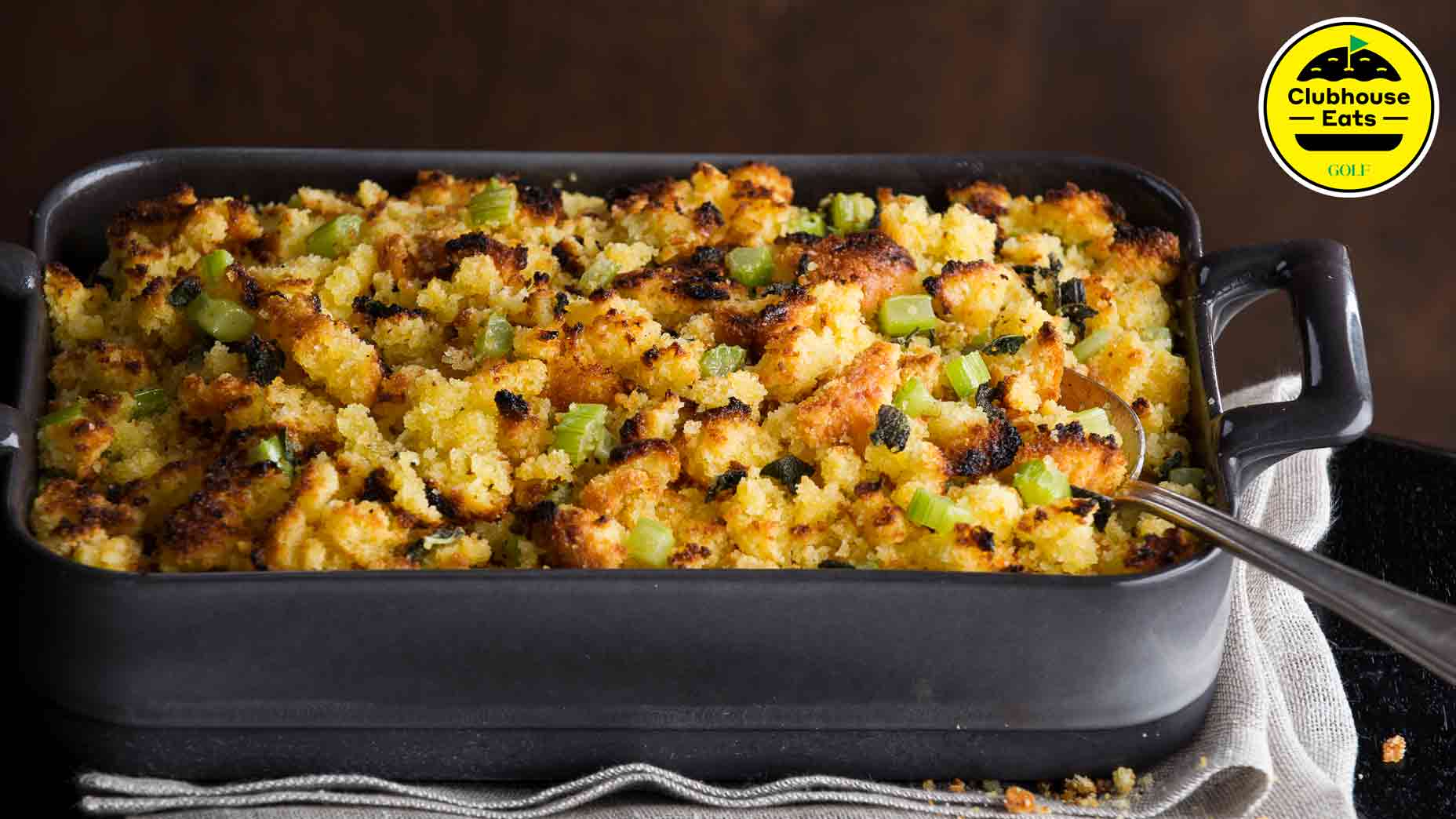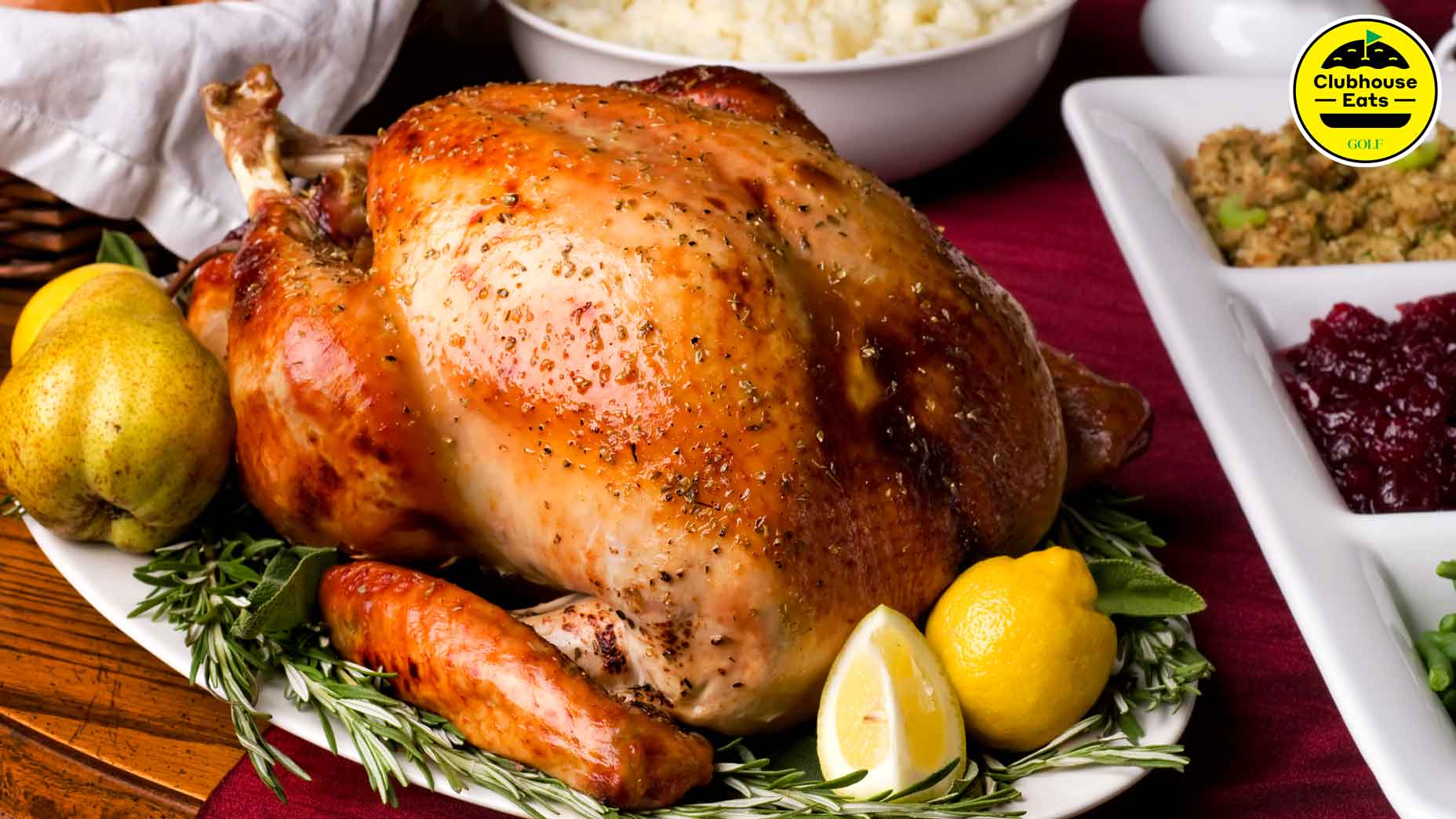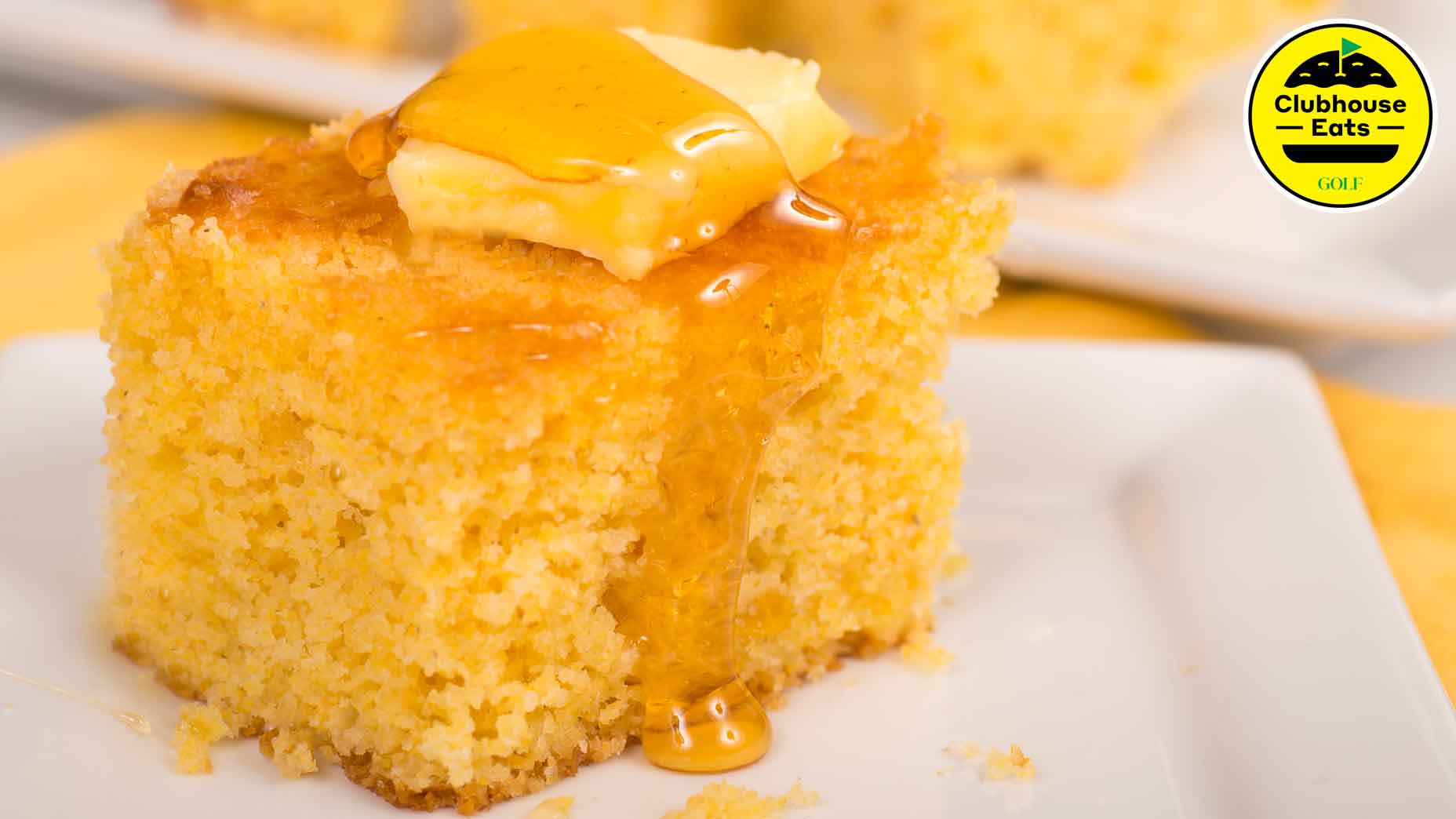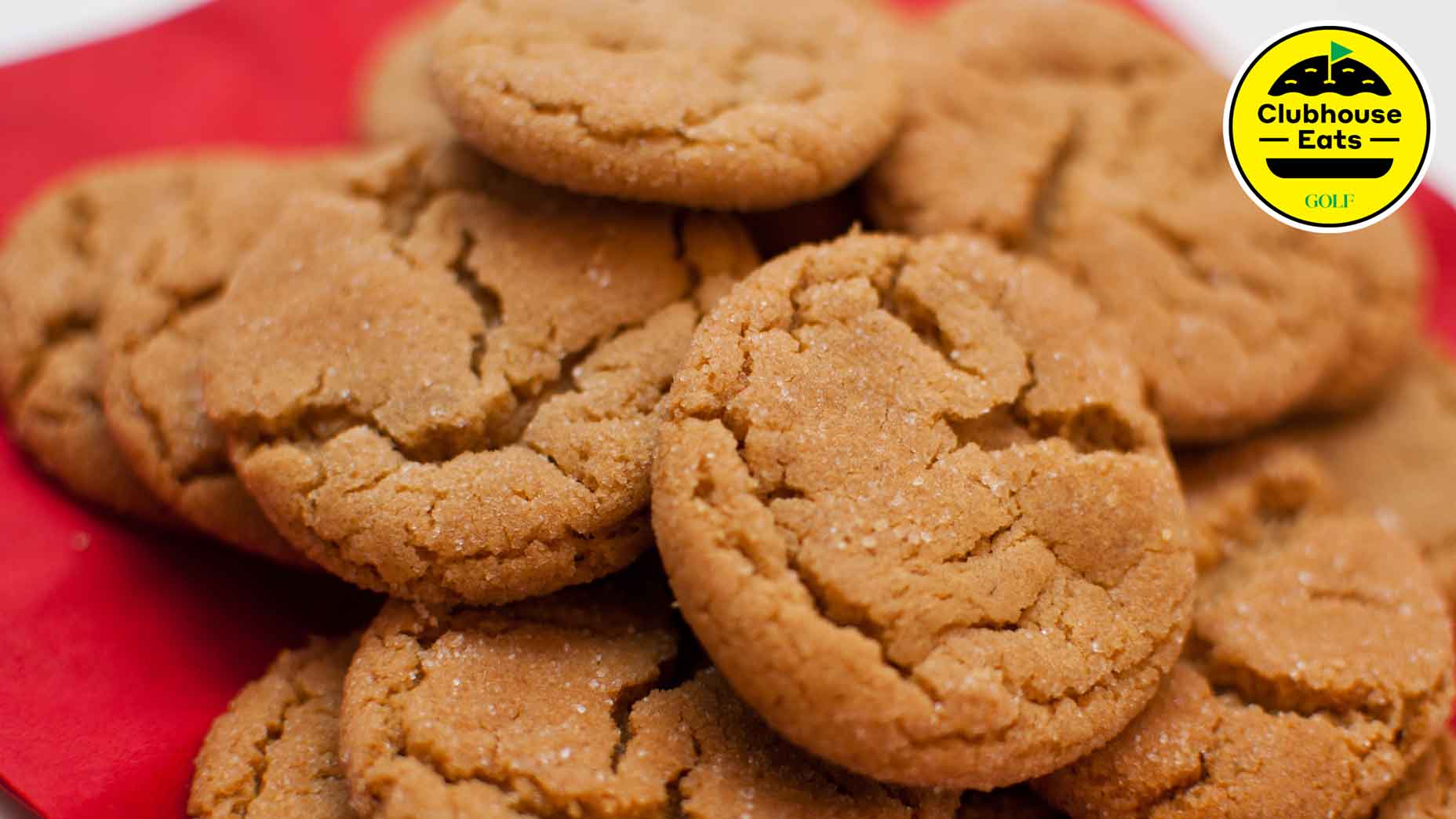Welcome to Clubhouse Eats, where we celebrate the game’s most delectable food and drink. Hope you brought your appetites.
***
As Thanksgiving approaches, thoughts turn to lavish family meals where turkey typically takes center stage. If you’re in charge of that holiday feast, you understand the importance of serving a perfectly cooked bird — whether it’s roasted, smoked, or deep-fried.
Too often, however, so much attention is paid to the turkey that other key components of the meal, like the stuffing, are overlooked. Don’t kid yourself, there are plenty of people out there whose favorite part of Thanksgiving dinner isn’t a juicy bird, but equally moist and flavorful stuffing.
If you’ve spent years focused on the turkey, chances are your stuffing game could use some TLC. Fortunately, Matthew Gilbert, the executive chef at Medinah Country Club, is here to be your stuffing’s caregiver. His advice is also well-founded — he and his team feed about 1,500 people at Medinah on Thanksgiving Day — a mix of members who either make reservations for the club’s sit-down brunch or who order customizable takeaway meals that can serve 12. “In three or four hours, we’re sending out 100 birds with all the sides,” he says of the morning window when those Thanksgiving Feast packages are picked up. “It’s like we’re Santa’s Christmas elves but in Thanksgiving mode.”
To perform a second Thanksgiving miracle, Chef Gilbert has not only shared the club’s garden herb stuffing recipe (see below), but he also offers tips to maximize its flavor. Now that’s something for which we can all give thanks!
3 *other* ways to prepare potatoes, according to a golf club chefBy: Shaun Lewis
Keep It Fresh
“If you don’t have fresh herbs, dried herbs are better than nothing,” he says. “But using fresh herbs will make a big difference.” Also, wait to add them until you’re combining all ingredients in a large mixing bowl. They’ll better maintain their aromatic qualities.
Keep It Simple
Major pitfalls when making stuffing include adding too much (or too little) stock, but it’s equally risky to add too many other ingredients. “If we’re paying homage to tradition,” Gilbert says, “we want to keep it fairly simple. Too often, people think it’ll help to add seven different herbs, multiple types of sausage, or cranberries. Instead, you’ll be better off choosing a simple path that you want to go down and staying true to that.”
The Meat of the Matter
When it comes to making memorable stuffing, sausage can be a great flavor enhancer, says Gilbert, and many varieties can work. At Medinah, he and his team use a traditional breakfast pork link. “Our maple breakfast sausage gives you that awesome umami character and a touch of sweetness.”
Sweat, Don’t Sauté
When cooking the vegetable mixture, you want to sweat the onions and celery. Too many people make the mistake of cooking them on too high a heat, so they end up sautéing them, instead. “When you’re sweating, you’re not getting that caramelization,” Gilbert explains. “You just want the vegetables to soften — cook them until the onions are translucent. And remember to cut the celery the same size as the onions so both vegetables cook evenly.”
The Greatness of Garlic
As Gilbert acknowledges, adding garlic is never a bad idea. “Garlic always deepens the flavor of food,” he says. Just make sure you add the garlic near the end of the sweating stage. If you’re cooking the onions and celery for 30 minutes, add some minced garlic with five minutes left.”
Medinah Country Club’s Garden Herb Stuffing
- 1 loaf of baguette bread – diced or torn into 1-inch pieces
- 1 lb. pork breakfast sausage – diced
- 2 cups of celery – diced
- 3 cups of yellow onion – diced
- 1 oz. fresh rosemary – finely chopped
- 1 oz. fresh sage – chiffonade
- 1 oz. fresh thyme – finely chopped
- 1 cup of butter
- 1 oz. vegetable oil
- 1 quart turkey or chicken stock
- Salt to taste
Method:
Arrange bread evenly on an ungreased baking pan and place in an oven preheated to 250 degrees F. Check the bread after an hour. If dry, pull out. If still soft, continue to bake, checking every 15 minutes until dry. Once the bread is completely dried, let it cool.
How to cook a perfect Thanksgiving turkey, according to a 3-star Michelin chefBy: Josh Sens
Heat vegetable oil in a sauce pot or sauté pan over medium-high until hot. Add sausage and cook until well browned.
Transfer sausage to a plate, leaving the rendered fat in the pan.
Reduce heat to medium-low and add the celery and onion. If there is enough pork fat to coat the vegetables, add just a small pad of butter. If not, add enough butter to fully coat the vegetables. Season with a dash of salt and cook until the onions are translucent and the celery is soft (about 20 minutes). When the vegetables are soft, return sausage to the pan and remove from the heat.
Transfer dried bread to a large mixing bowl, then add the herbs and the vegetable and sausage mixture. Slowly pour two cups of stock to the bowl and gently mix. Season with a dash of salt, then add more stock (a few ounces at a time), continuing to mix until the bread no longer absorbs the liquid. Taste a piece of the stuffing and, if necessary, add more salt. (At this stage, the stuffing should maintain its structure; it shouldn’t be mushy.)
Grease a casserole pan with the leftover butter, then add the stuffing mixture, spreading it out evenly into the pan.
Cover with aluminum foil and place it in a preheated oven set to 350 degrees F. Bake for about 40 minutes or until a thermometer inserted into the middle of the stuffing (at the center of the pan) reads 160 degrees F. Uncover and bake until the top is golden brown and crisp (20 to 40 more minutes).
Remove from the oven and let it cool for a few minutes before serving.
Shaun Tolson is a freelance writer based in Rhode Island. When it comes to golf, he covers everything from architecture, course reviews, and travel, to equipment, gadgets and gear, and feature profiles. As a lifestyle writer, his expertise is rooted in the finer things in life — wine and spirits, luxury automobiles, private aviation, hotels & resorts, fine dining, and more.












